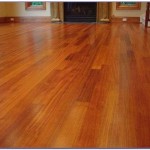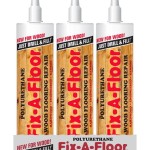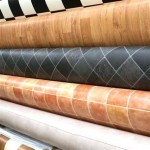Are you looking to repair or fill gaps in your hardwood floor? Whether you’re dealing with gaps between floorboards or gaps in the floor caused by shrinkage, there are a few different ways to take care of the problem. Read this article to learn more about the different methods for filling gaps in your hardwood floor.
Types of Gaps
When it comes to filling gaps in your hardwood floor, the first step is to identify what type of gap you’re dealing with. There are two main types of gaps in hardwood floors:
- Gaps between floorboards: These are gaps between the floorboards themselves, usually caused by the boards shrinking or being poorly installed.
- Gaps in the floor: These are gaps in the floor caused by shrinkage. The gaps will be most noticeable near walls and in corners.
Filling Gaps Between Floorboards
The type of filler you use to fill gaps between floorboards will depend on the size of the gaps. For small gaps (1/8” or less), you can use a wood filler or wood putty. These products are available at most hardware stores and come in a variety of colors to match the wood in your floor. To apply, simply fill the gap with the product and use a putty knife to smooth it out.
For larger gaps, you may need to use a flexible filler. This type of filler is available in a variety of colors and is designed to expand and contract with the wood as it changes. To apply, fill the gap with the product and use a putty knife to smooth it out. Allow the filler to dry completely before sanding it out and staining it to match the rest of the floor.
Filling Gaps in the Floor
Filling gaps in the floor caused by shrinkage is a bit more difficult than filling gaps between floorboards. The best way to fill these gaps is to use a flexible floor filler. This type of filler is designed to expand and contract with the wood, so it won’t crack or break as the wood moves. To apply, fill the gap with the product and use a putty knife to smooth it out. Allow the filler to dry completely before sanding it out and staining it to match the rest of the floor.
Maintaining Your Hardwood Floor
Once you’ve filled the gaps in your hardwood floor, it’s important to take steps to maintain it. To keep your hardwood floor in good condition, make sure to:
- Regularly vacuum and dust the floor to remove dirt and debris.
- Use a damp mop to clean the floor, as this will prevent dirt and debris from scratching the finish.
- Once a year, use a wood floor cleaner to clean and protect the finish.
- Avoid walking on the floor in high heels, as this can cause gouges in the finish.
- Avoid dragging furniture across the floor, as this can cause scratches in the finish.
- Place mats or rugs at the entryways to collect dirt and debris before it gets on the floor.
Conclusion
Filling gaps in your hardwood floor is essential for maintaining the beauty and lifespan of your floor. Depending on the type of gap you’re dealing with, you can use either wood filler or flexible floor filler to fill the gaps. In order to keep your hardwood floor in good condition, make sure to regularly vacuum and dust the floor, use a damp mop to clean it, and avoid walking on the floor in high heels or dragging furniture across it.












Related Posts








